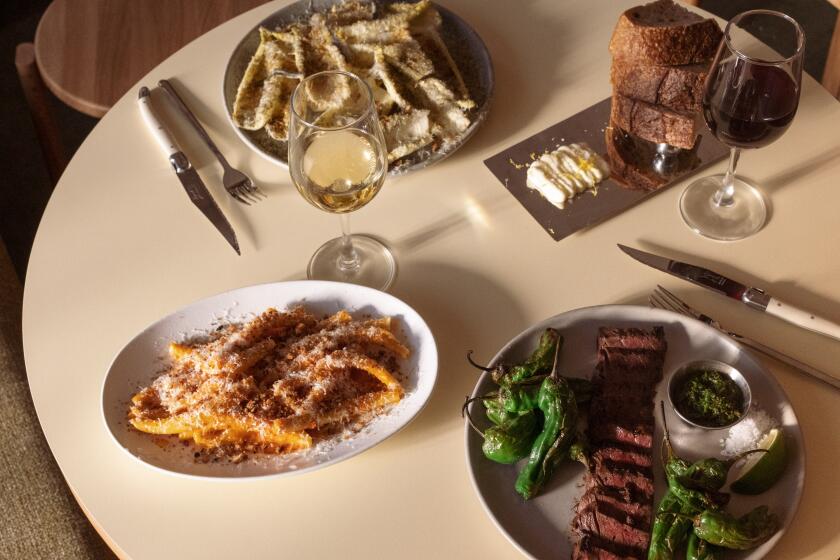Interchanging Ingredients
Question: I have been told that sour cream used in cakes and cookies makes them more moist. Is it possible to use sour cream in the place of milk in a recipe? If so, would you use the same amount of the sour cream as milk?
Answer: It’s true that sour cream adds richness and makes baked products more tender. However, because sour cream and milk have different consistencies and fat content, they cannot be interchanged in recipes.
The following information comes from a pamphlet on sour cream printed by the American Dairy Assn. Using these guidelines and some experimentation, you may be able to create the end products you desire.
“In baked products, when sour cream is used, use baking soda as all or part of the leavening agent using the proportion of 1/2 teaspoon baking soda to 1 cup sour cream. This proportion is equivalent in leavening power to 1 teaspoon baking powder and 1 cup sweet milk. Combine the baking soda with the other dry ingredients, not with the sour cream.
“Because 1 cup of sour cream contains fat (about 3 tablespoons), it can be used to replace part or all of the fat called for in recipes for pancakes, biscuits and quickbreads, as well as to replace a portion of the liquid. In batters requiring a high percentage of liquid, the sour cream may contain more fat than the amount called for in the original recipe and a richer product will result. Sour half and half should not be substituted in baked foods calling for sour cream.
Q: A few weeks ago the Times Food Section published a recipe calling for rice sticks that are to be fried in hot oil. Could you please tell me where they are available?
A: Rice sticks are available at Asian markets and in the Asian sections of many supermarkets. Look for opaque, dried noodles packaged in 8-ounce or 1-pound bundles.
In “The Cuisines of Asia” (St. Martin’s/Marek: 1984) author Jennifer Brennan explains that “Rice-stick noodles, also known as long rice (in Hawaii) and as rice vermicelli, are white, brittle, thin dried noodles and are soaked before use in stir-fried dishes or in soups. They can also be deep-fried straight from the package--they puff up into a delicious tangle of crisp, crunchy texture. In this form, they are used in the Thai fried-noodle dish mee krob, and also in the Chinese chicken salad with crisp noodles.”
According to Brennan, the names used for these noodles are Chinese-- (py)-mee-fun, Ngunsi-fun or lai-fun; Thai-- sen-mee; Indonesian-- bee-hun; Vietnamese-- banh-pho; and Malay-- chee-cheong-fun. We have also seen the names py mei fun and mai fun used for rice sticks.
Q: I have been making sun tea for years, but for the last couple I have been making it in a plastic pitcher with a top on it. Lately I have noticed that recipes for sun tea always say to put the cold water into a glass container. Is there some reason that glass is preferred? I am using a hard, clear plastic container similar to any glass container.
A: We checked with Donald Wiederecht, executive director of the Tea Council of the U.S.A. Inc., and he assured us the plastic container you’re using is fine. He went on to explain that it’s the sun’s heat that speeds the brewing process so that sun tea can be made in three or four hours, but that tea may also be brewed six to eight hours or overnight in the refrigerator. It’s important that any container used be very clean and it should be covered during brewing.
Address questions on food preparation to You Asked About . . ., Food Section, The Times, Times Mirror Square, Los Angeles 90053. Personal replies cannot be given.
More to Read
Eat your way across L.A.
Get our weekly Tasting Notes newsletter for reviews, news and more.
You may occasionally receive promotional content from the Los Angeles Times.








